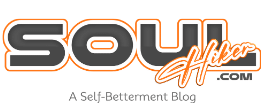
Table of Contents
Key Takeaways:
- Understanding best practices for managing dental claims and payments.
- Exploring tools and resources that can streamline the process.
- Learning about common challenges and solutions in dental billing.
Introduction to Dental Claims and Payments
Dental practices often face numerous challenges when handling claims and payments. Streamlining these processes is crucial for maintaining a healthy revenue cycle and ensuring patient satisfaction. Managing dental insurance claims efficiently can ease administrative staff’s workload and improve a dental practice’s overall financial health. By implementing these strategies, dental practices can reduce claim denials, expedite payment processes, and enhance operational efficiency. These methods support a seamless operation and aid in the overall prosperity and longevity of the business.
Best Practices for Efficient Claims Management
Efficient claims management involves verifying patient information and insurance coverage before the appointment. An electronic claims submission system can also expedite the process significantly, cutting administrative time and costs. These proactive measures ensure that the claims process is seamless and error-free.
- Pre-Verification of Insurance: Verify insurance provider coverage and benefits before providing services. This ensures that the services offered will be included, decreasing the chances of claims being rejected in the future. Ensure that all necessary patient information is accurate and up-to-date. Errors in patient data can lead to denials, so double-checking this information is a simple yet effective way to streamline the claims process. This attention to detail can prevent many common issues related to incorrect or incomplete information.
- Using Electronic Claims Submission Systems: Electronic submissions are faster and reduce errors compared to paper submissions. Electronic processing can automatically check for errors or missing information before the claim is submitted, decreasing the chances of rejections. This automation helps ensure that claims are processed more quickly and efficiently. Utilize software that integrates with the practice’s existing systems for seamless operations. Many modern software solutions can integrate with scheduling and patient management systems, creating a more cohesive and efficient workflow. This holistic method has the potential to simplify and optimize the claims process, lessening the workload for employees.
Addressing Common Challenges
Even with best practices, challenges can still arise in the claims and payment process. Common issues are complicated reimbursement procedures. Understanding how to address these challenges can reduce stress, and ensure a more stable financial situation for the practice. By being proactive and prepared, dental practices can effectively navigate these obstacles.
- Dealing with Claim Denials: Identify and address the reason for denial promptly. Whether the issue is a coding error or missing information, quickly identifying and rectifying the problem increases the chances of successful resubmitting. Taking immediate action can minimize the disruption caused by denied claims. Resubmit claims with the necessary corrections or additional documentation. Gathering all necessary documentation and ensuring all information is accurate before resubmitting can reduce the likelihood of a second denial. This thorough approach helps to ensure that resubmitted claims are accepted and processed smoothly.
- Consider utilizing a third-party service: to handle claim follow-ups, these services specialize in managing and following up on unpaid claims, freeing up administrative staff to focus on other tasks. Outsourcing this responsibility can be a cost-effective solution that increases the likelihood of prompt payment.
Leveraging Technology to Streamline Payments
Adopting the right technology can further streamline the payment process. Online payment portals and automated billing systems can improve efficiency, accuracy, and convenience for the practice and the patients. These tools can reduce administrative workload, minimize errors, and provide a seamless payment experience. By leveraging technology, practices can achieve more predictable and stable financial management.
- Online Payment Portals: Allow patients to conveniently make online payments. Online payment platforms provide patients with a secure and convenient method to pay their bills, which may increase the likelihood of payments being made on time. The convenience offered can enhance patient contentment and generate a consistent income flow for the clinic. Simplify payment processing by automating tasks to lower administrative workload. Automation can manage tasks like sending payment reminders and receipts, allowing employees to concentrate on other crucial responsibilities. Decreasing manual tasks can result in a notable enhancement in efficiency.
- Automated Billing Systems: Generate and send invoices to patients and insurance companies without manual intervention. Automated systems can decrease human mistakes and guarantee that invoices are promptly sent, assisting in sustaining a consistent cash flow for the business. Because of administrative errors, this efficient billing system guarantees timely payment completion. Efficiently keep track of payments and outstanding balances. These systems frequently include functionalities that enable practices to easily monitor paid payments, overdue payments, and outstanding balances, simplifying financial management. This level of transparency can assist practices in maintaining their financial well-being and preventing problems arising from outstanding balances.
Streamlining dental claims and payments involves a meticulous blend of best practices, advanced technology adoption, and proactive management of common challenges, all aimed at enhancing operational efficiency within dental practices. By integrating sophisticated software systems for automated claim submissions and real-time tracking, practices can significantly reduce administrative burdens and minimize errors. Implementing comprehensive training programs for staff on the latest billing procedures and insurance regulations ensures smoother workflows and faster payment cycles. Proactive management, such as regularly reviewing and updating coding practices and maintaining clear communication with insurance providers, further mitigates denials. These strategies not only bolster the financial stability of dental practices by ensuring timely and accurate reimbursements but also elevate the patient experience, fostering higher satisfaction and loyalty. Efficiencies in the dental healthcare industry give practices a significant edge, enabling them to prioritize patient care over administrative tasks.
